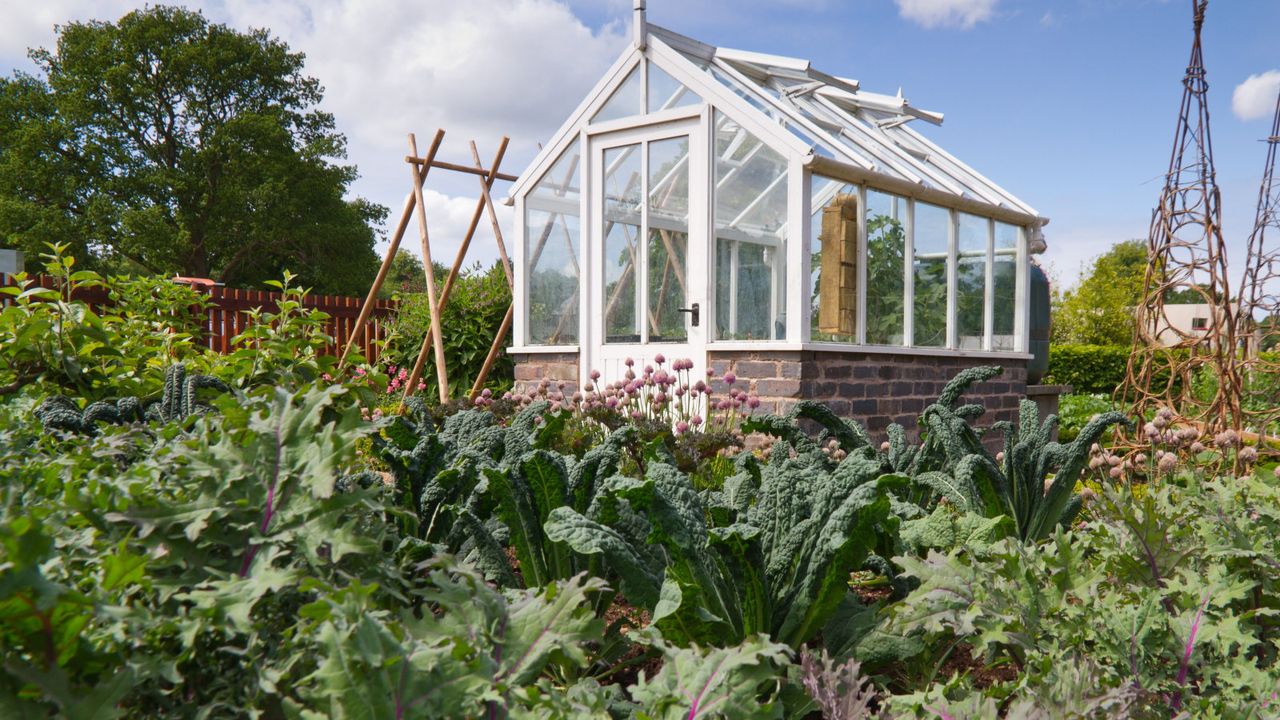There’s no greater pleasure than cultivating and gathering vegetables directly from your own garden. It’s a fulfilling activity, and with these motivating suggestions, you can create an attractive and bountiful space, regardless of whether your vegetable garden is large or small.
A well-organized vegetable garden can cultivate a variety of crops, ranging from touchable herbs to underground vegetables and fruit-bearing trees. Regardless of the area’s size, there is the possibility of yielding a plentiful harvest for your pleasure.
There is no justification for everyone not having a vegetable garden as part of theirgarden ideas. No matter if you have a large yard, a small vegetable garden, or cultivate vegetables in elevated beds, window boxes, or hanging baskets, there are numerous suggestions here to assist you in enjoying homegrown produce.
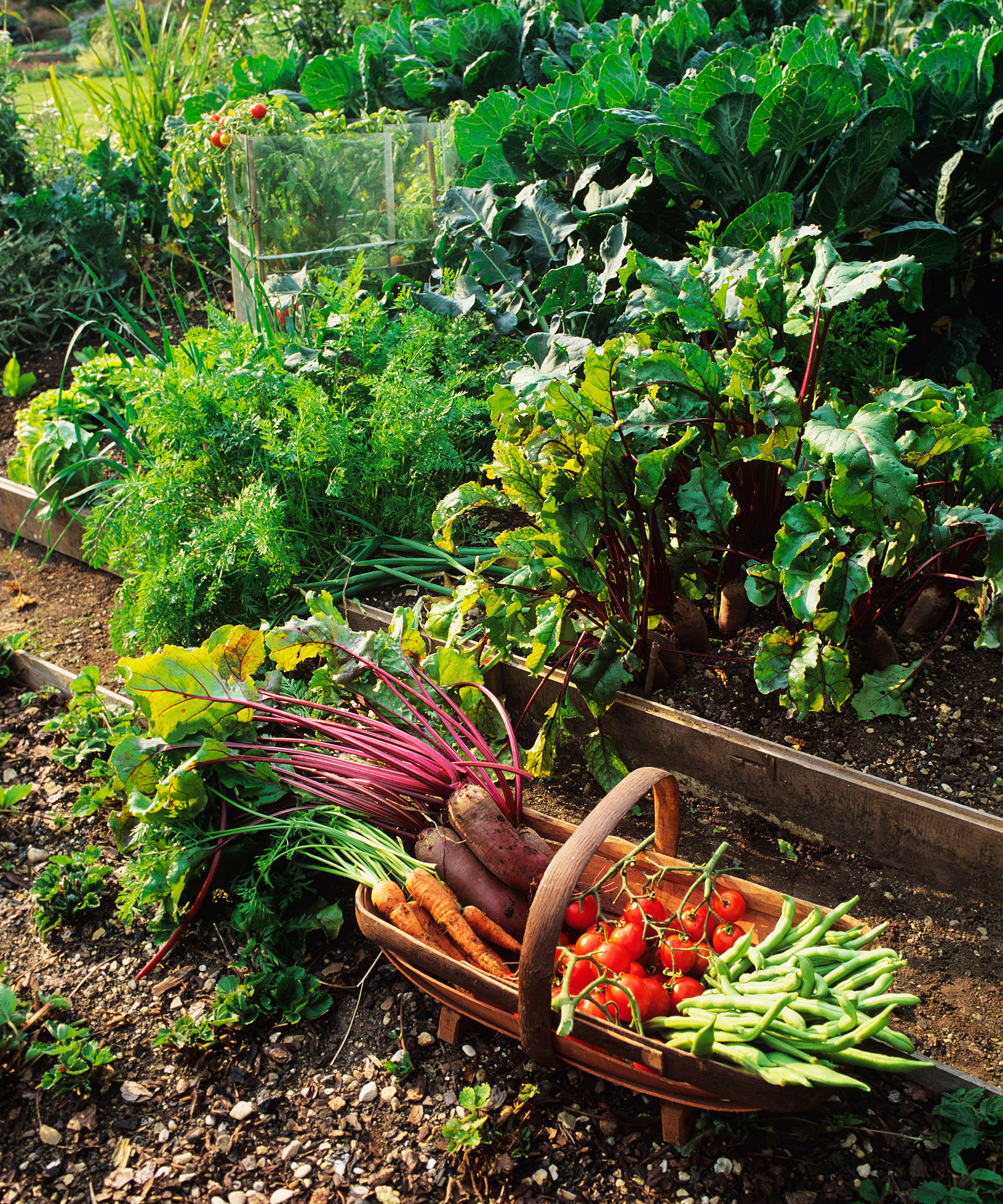
25 concepts to enhance your storyline – ideal for compact vegetable gardens
There has been a revival of ‘grow your own’ in recent years, as an increasing number of individuals are uncovering the pleasures of cultivating and gathering their own food.
If you want to start a vegetable garden, there are concepts here suitable for every scale, aspect, and goal. They are all also applicable if you simply wish to rearrange an existing vegetable garden. You can select the ideas that are most effective for your specific vegetables and available space.
1. Cultivate vegetables that you enjoy consuming

The initial step in creating your vegetable garden concepts is to select the vegetables you wish to cultivate. This choice will influence your design and the overall appearance of your vegetable garden. The most effective method for selecting your crops is to grow what you enjoy eating.
“List your preferred foods, including herbs, and think about those that cost more to purchase. Include various types of vegetables you like, then examine your area and weather conditions to refine your choices,” suggests gardening expert Leigh Clapp.
Arrange your planting schedule to ensure a continuous supply of crops across the seasons – from early potato harvests to brassicas that last through the winter.
Once you have chosen the plants you wish to cultivate, make sure you are awarewhen to plant vegetablesso that you can begin to understand yourgardening calendar.
2. Spread out your planting to ensure a continuous supply of crops throughout the year

You may believe that ideas for a vegetable garden are only effective during the warmer seasons; nevertheless, by planning ahead, you can enjoy tasty harvests throughout the entire year.
There are numerous crops you can cultivate throughout the year – for ideas, conduct researchwhat to grow in December and what to grow in January.
“When beginning, opt for edibles that are simple to cultivate, like tomatoes, and schedule the planting of various crops to ensure continuous harvest throughout the year. Your greenhouse will allow you to achieve much greater productivity during the growing season compared to outdoor gardening alone, particularly if you apply the correct growing methods,” says Tom Barry, CEO ofHartley Botanic.
If cultivating produce within a greenhouse, think about implementingvegetable garden container ideas, as these potted plants can be cultivated outdoors during favorable weather but can be relocated to a greenhouse when the initial frost approaches, thereby extending the growing period.
3. Integrate herbs into your vegetable garden

Aromatic herbsare among the simplest crops to incorporate into your vegetable garden concepts. They can be cultivated individually as part ofherb garden ideasor may be included in a larger vegetable garden.
Being highly aromatic, herbs offer much more than just a tasty harvest. They also serve as an effective way to keep pests away, allowing your other vegetables to grow better.
Spearmint, sage, thyme, lemongrass, and rosemary are not just excellent culinary herbs to include in your garden, but their potent oils also serve as a natural deterrent for wasps, while offering a pleasant fragrance. Experts suggest placing potted herbs near your dining area, or, if space is limited, consider hanging herb planters on a nearby wall.The Greenhouse People.
If you’re looking to cultivate herbs as part of your vegetable garden plans, make sure you are aware ofwhen to plant herbs to provide them with the best possible beginning in life.
4. Label your plants
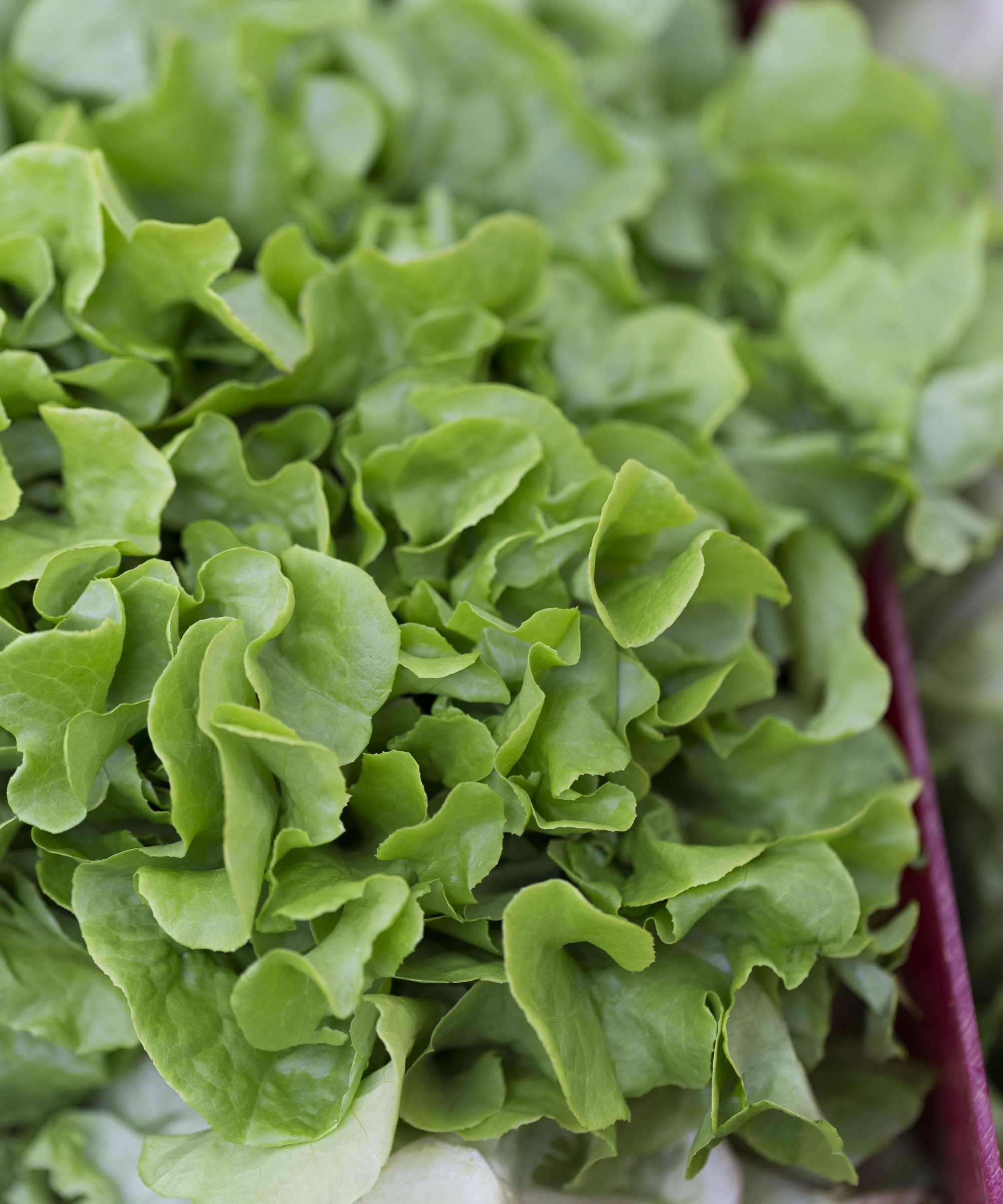
Anyone who has ever engaged in any gardening knows how simple it is to forget what you have planted. This isn’t as significant when you aredesigning a flower garden for cutting, it is essential when cultivating vegetables, as you must be sure about what you are consuming.
Plant tags have a tradition of being rather unappealing, offering choices that range from bright white plastic strips written with permanent markers to wooden stakes that tend to deteriorate throughout the season.
Fortunately, there are currently many attractive and enduring designs that are ideal for your vegetable garden concepts – ranging from homemade projects to sturdy stone options, such as thesenatural stone plant tags at Walmart.
5. Embrace companion planting
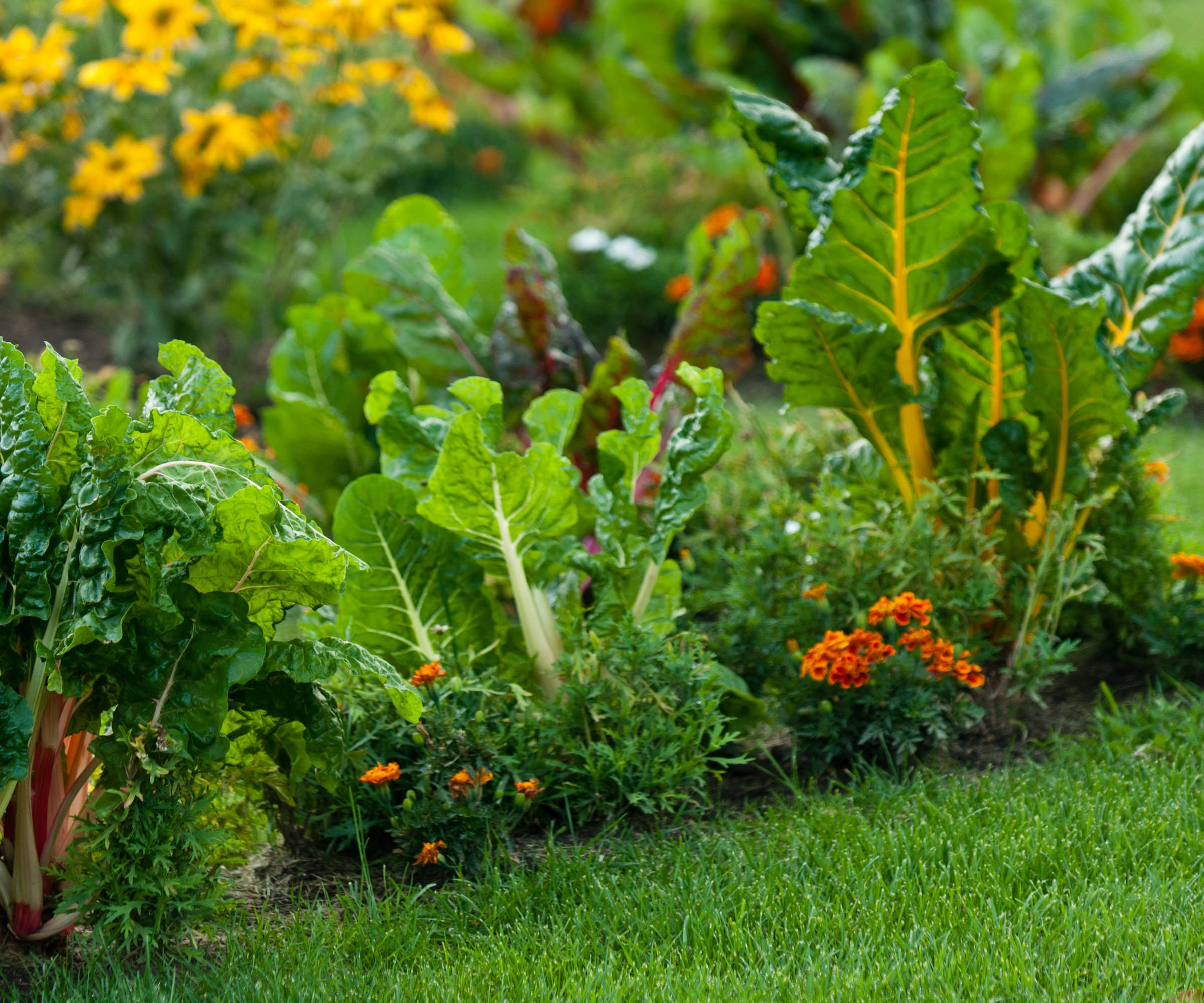
Traditional methods for vegetable gardens involve keeping the crops apart from the flower sections of the garden. Nonetheless, this may not always be the most effective strategy for achieving the highest possible harvest.
Rather, incorporating flowers into your plants is an excellent method to adoptcompanion planting and, if you plant blossoms that draw bees, will assist in boosting the population of pollinators for your crops.
Also take inspiration from kitchen garden ideasSince this historical garden style will assist you in creating an ideal low-effort area, attaining the proper mix of vegetables and flowers.
Even if you aren’t interested in having all yourbackyard ideasto concentrate on vegetable garden concepts, there are still many excellent suggestions availableplanning a kitchen gardenthat will enable your vegetable garden concepts to flourish.
6. Place your vegetable garden close to the kitchen
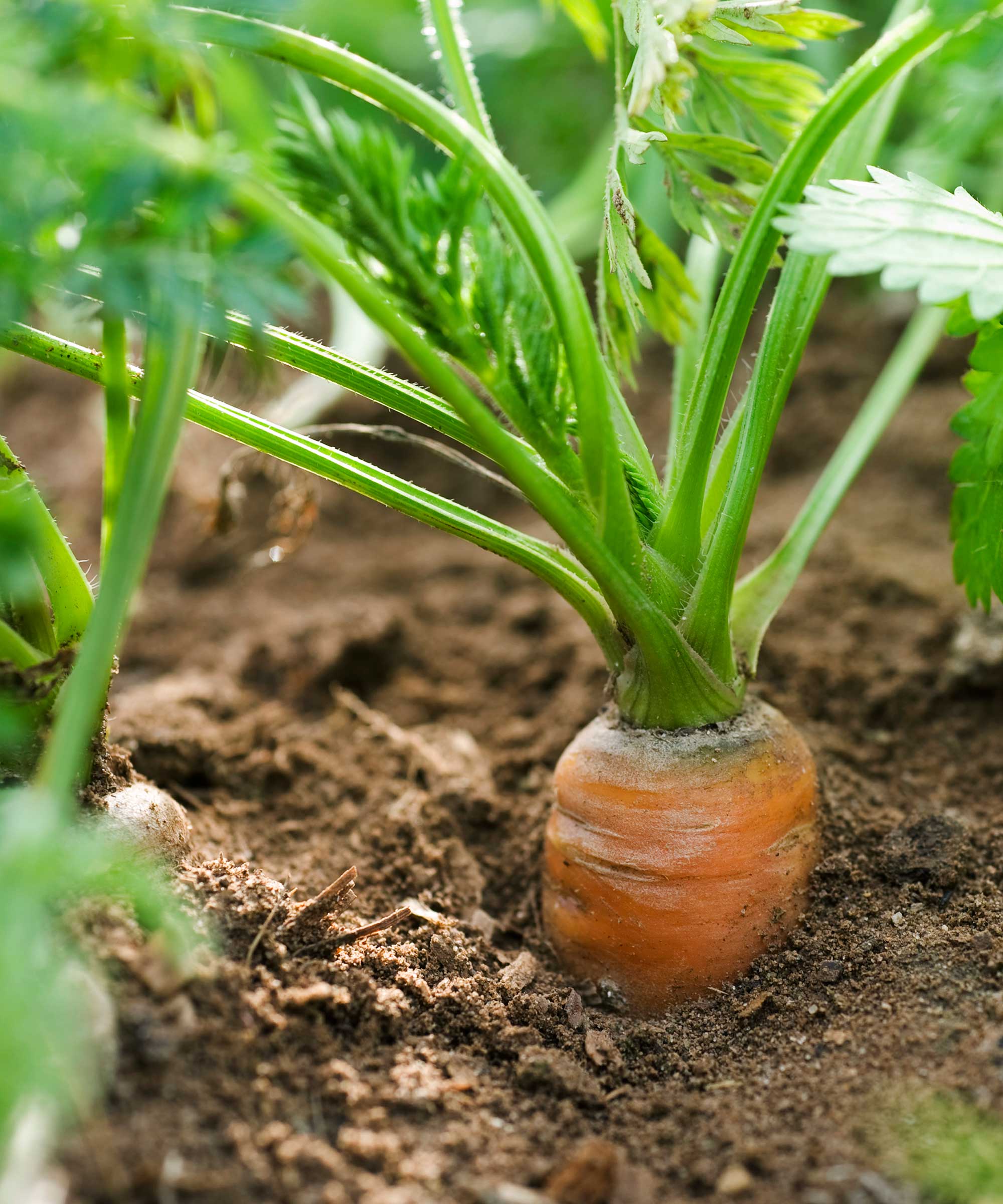
“Many of the plants used in vegetable gardens are annuals. They have a limited time frame and must grow quickly. To achieve this, they require all the support possible and ample nutrients to fuel their growth. This can only happen in full sunlight,” explains.Sarah Raven.
This compact vegetable garden concept enables you to position the plants nearer to the kitchen for convenience, and ensures you can closely monitor any pests or illnesses.
7. Think about a versatile greenhouse
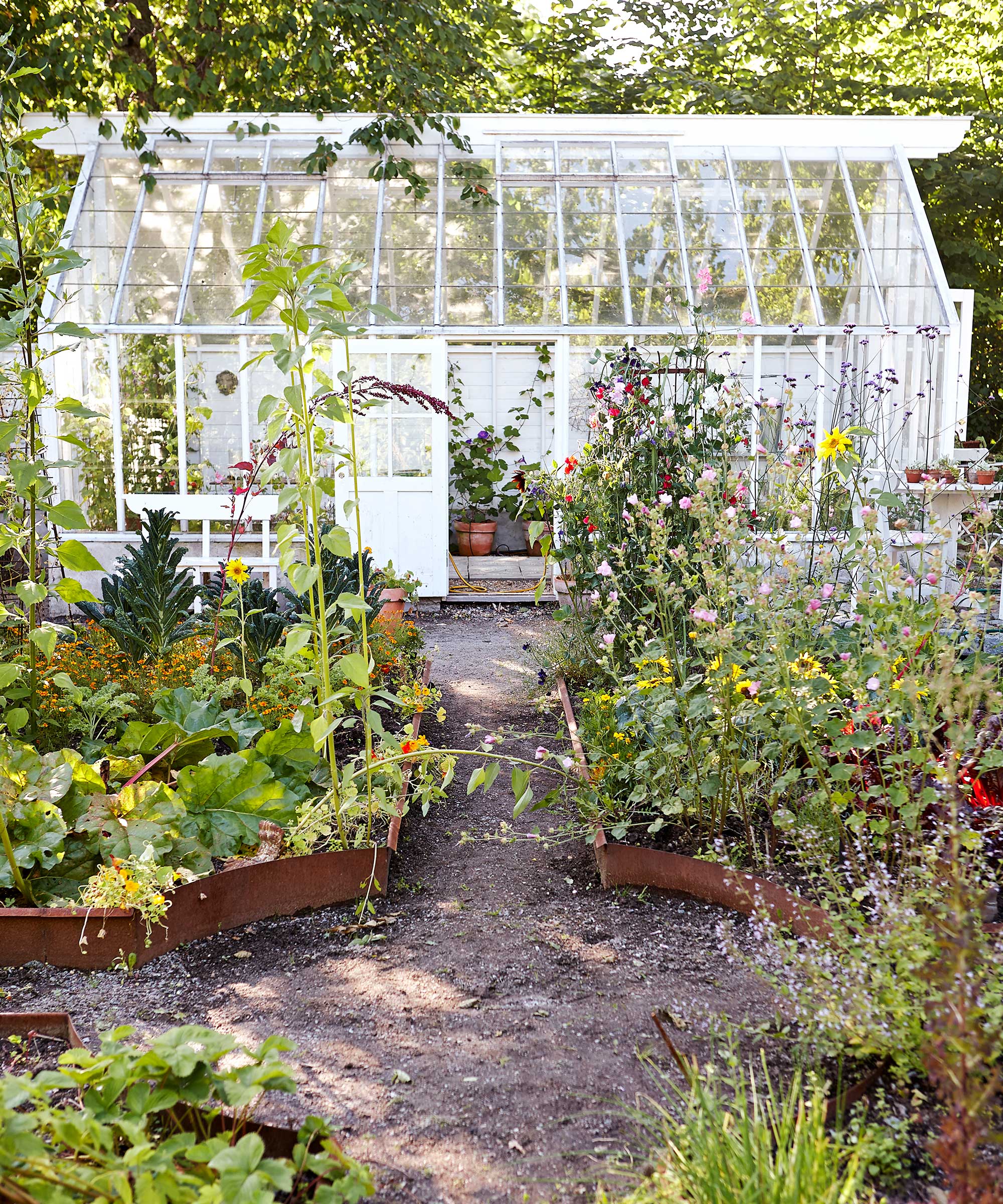
Greenhouse ideasare a crucial element of the vegetable garden, enabling you to grow as many seedlings as you wish, without the difficulty of forecasting frost or concerns about their placement.
The advantages extend beyond the beginning of the growing season, as even a greenhouse without heating can push back frost damage by several weeks, allowing you to increase your crop production – like harvesting fresh tomatoes well into autumn.
However, in smaller areas, you might have to make trade-offs; the most typical one being between a shed and a greenhouse. Each has its advantages, but the storage capacity of a shed often takes precedence over the plant-growing benefits of a greenhouse.
This doesn’t necessarily have to be the situation. If you’re having difficulty deciding between a greenhouse and other optionsshed ideas,then think about a design that incorporates both components.
Here, the shed provides a place to keep all your gardening equipment hidden, while the nearby lean-to greenhouse offers ample room for growing your plants, making it an intelligent, space-saving option for smaller areas.
8. Utilize vertical space by using hanging planters
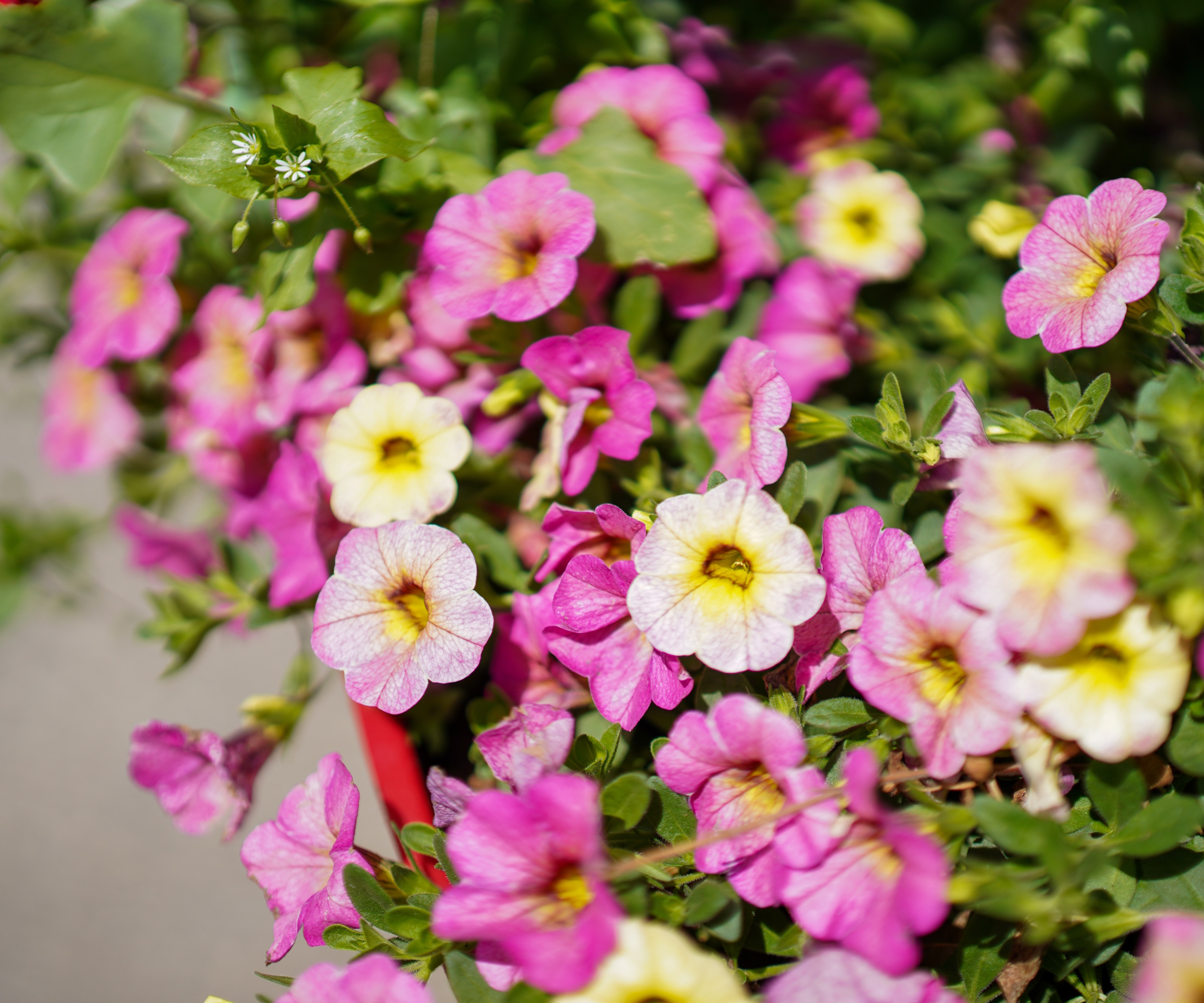
The best plants suitable for hanging basketsare not only trailing flowers; in reality, hanging baskets can also be utilized to cultivate various vegetables, enhancing the efficiency of your small garden ideas.
Not occupying any floor space, they offer a flexible growing area for various vegetables, especially suitable for cut-and-come-again lettuce, arugula, and spinach, and can also be utilized forgrowing tomatoes or as herb planter ideas.
Because the vegetables are raised off the ground, they are out of reach for slugs, snails, rabbits, and other creatures that could destroy your plants when they’re grown at ground level—this protection can increase your harvest.
You might also think about incorporating additional ornamental hanging baskets, such as this oneaged ceramic wall planter at Wayfair.
9. Construct a elevated garden for growing vegetables
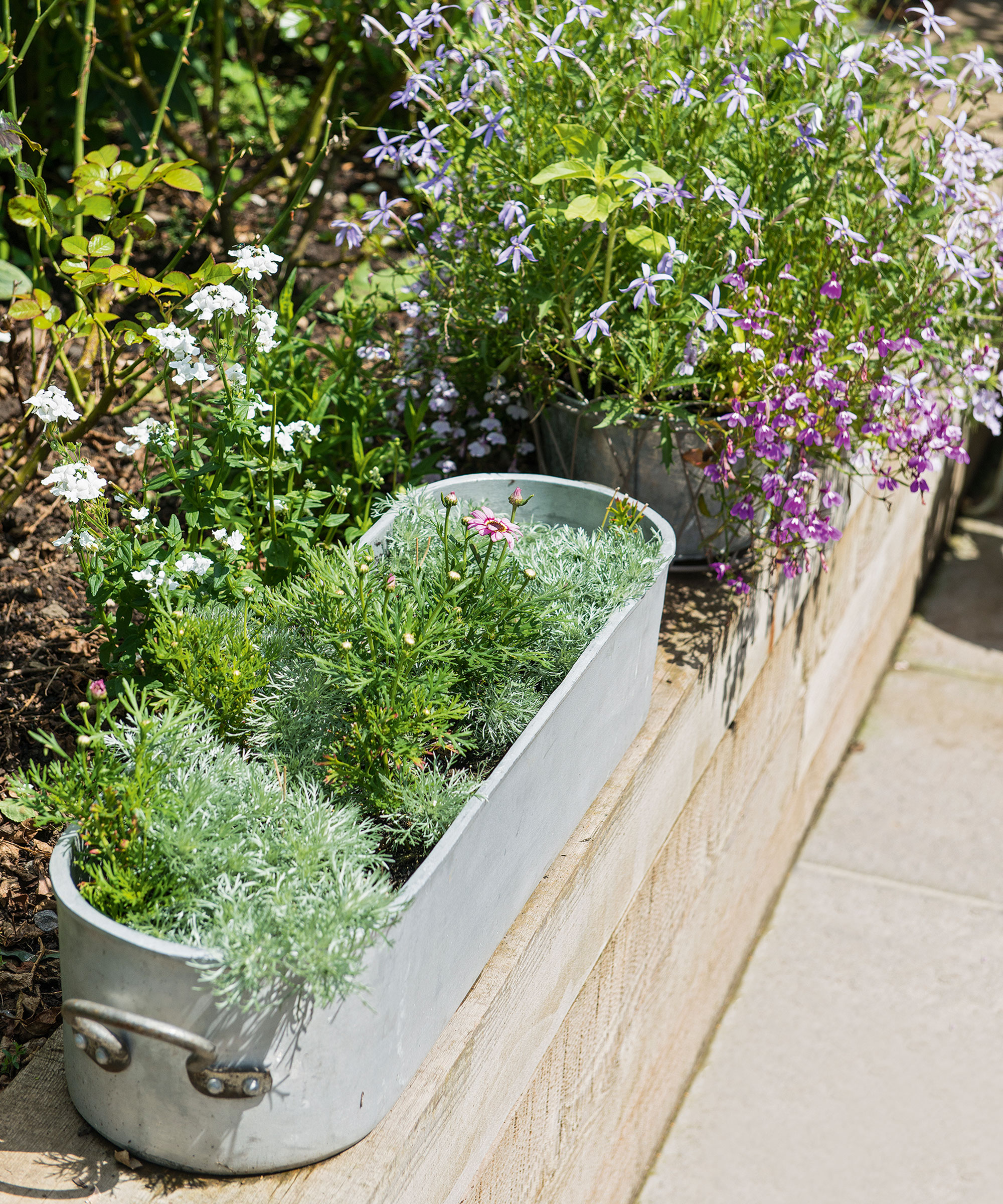
Raised garden bed ideasare a common method for cultivating edible plants within the concept of small-scale vegetable gardening.
Wood, brick, or sleepers can be utilized to construct your bed frame, and there are numerous pre-made kits available – or you can opt to build your own by followingMonty Don’s advice for raised beds Monty Don’s suggestions for raised garden beds Monty Don’s recommendations for elevated planting areas Monty Don’s guidance on building raised beds Monty Don’s insights into raised bed gardening Monty Don’s tips for creating raised garden beds Monty Don’s expert advice on raised bed techniques Monty Don’s methods for constructing raised beds. Fill your beds with high-quality soil, and then plant your fruit or vegetable crops.
You might enjoy planting in orderly rows or attractive designs to create a small kitchen garden look, incorporating some beneficial plant combinations.
Changing the crops regularly prevents pests and illnesses from accumulating, and also allows the nutrients provided by one plant to benefit the next ones.
You can purchase kits to construct either wooden or metal raised garden beds, such as this onegalvanized metal elevated garden bed kit available on Amazon
10. Cultivate vegetables using containers
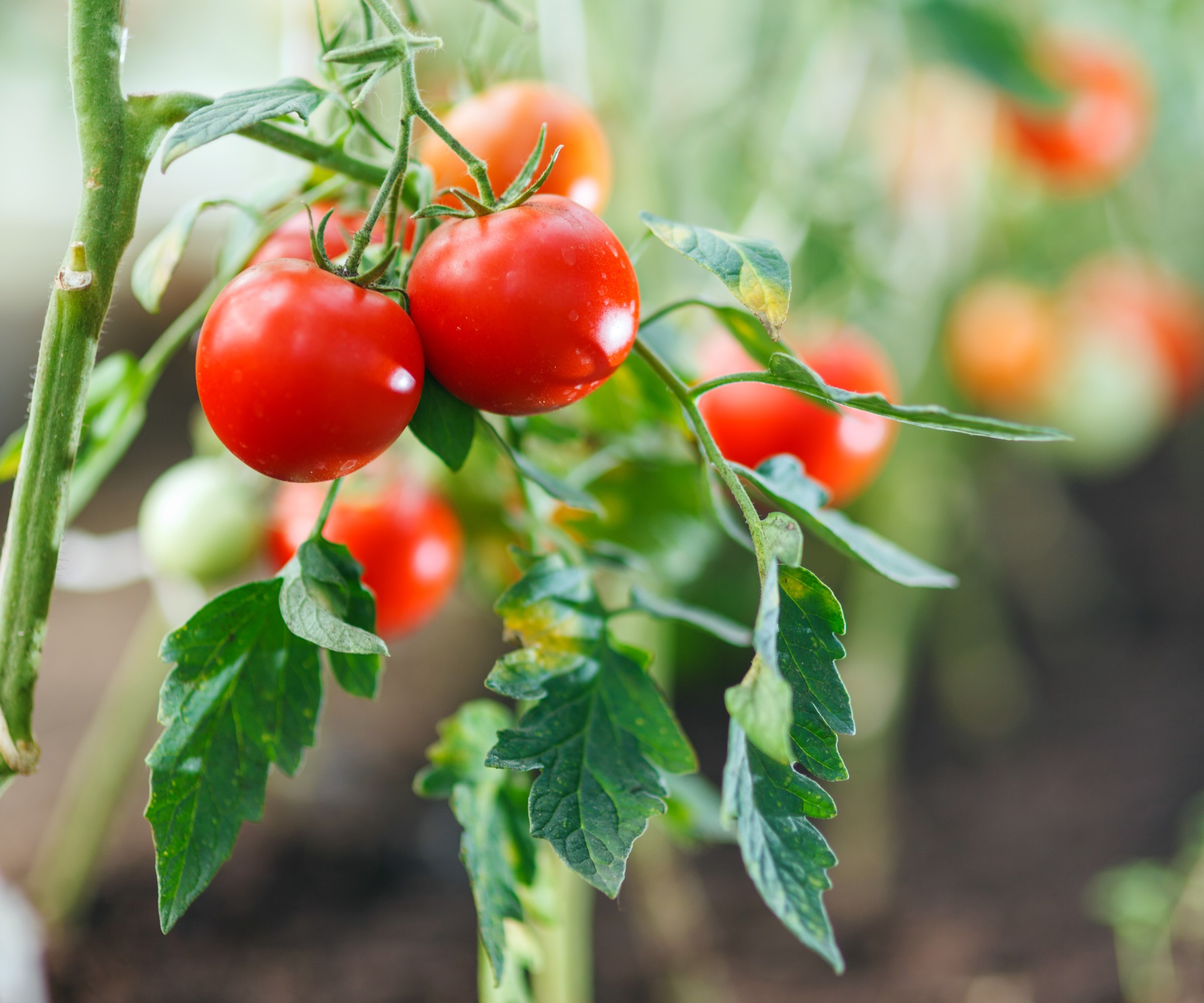
Areas with limited sunlight can frequently pose challenges in compact gardens; however,vegetable garden container ideasprovide the ideal solution as you can move them to track the sun all day long.
This implies that you are not only restricted tovegetables that thrive in shaded areasbut in reality, you can cultivate a variety of edible plants in your small garden ideas.
Gardening specialist Carol Klein states: ‘There are numerous vegetables that can be cultivated in containers. A great variety of them. All the salad plants you can grow with ease.’
Potted edibles and other container gardening ideasare especially practical for small vegetable garden concepts. They are especially beneficial for vegetable gardens that are part ofbalcony gardens or placed on patio ideasas they don’t need borders or elevated beds.
Growing a big pot filled with a combination of blossoms – especiallyflowers that attract bees– and a variety of crops, including various salad greens and peppers, is both aesthetically pleasing and functional. Consistently picking the leaves from vegetables like chard and lettuce that are grown in clusters can prevent overcrowding.
11. Cultivate plants that provide significant benefits
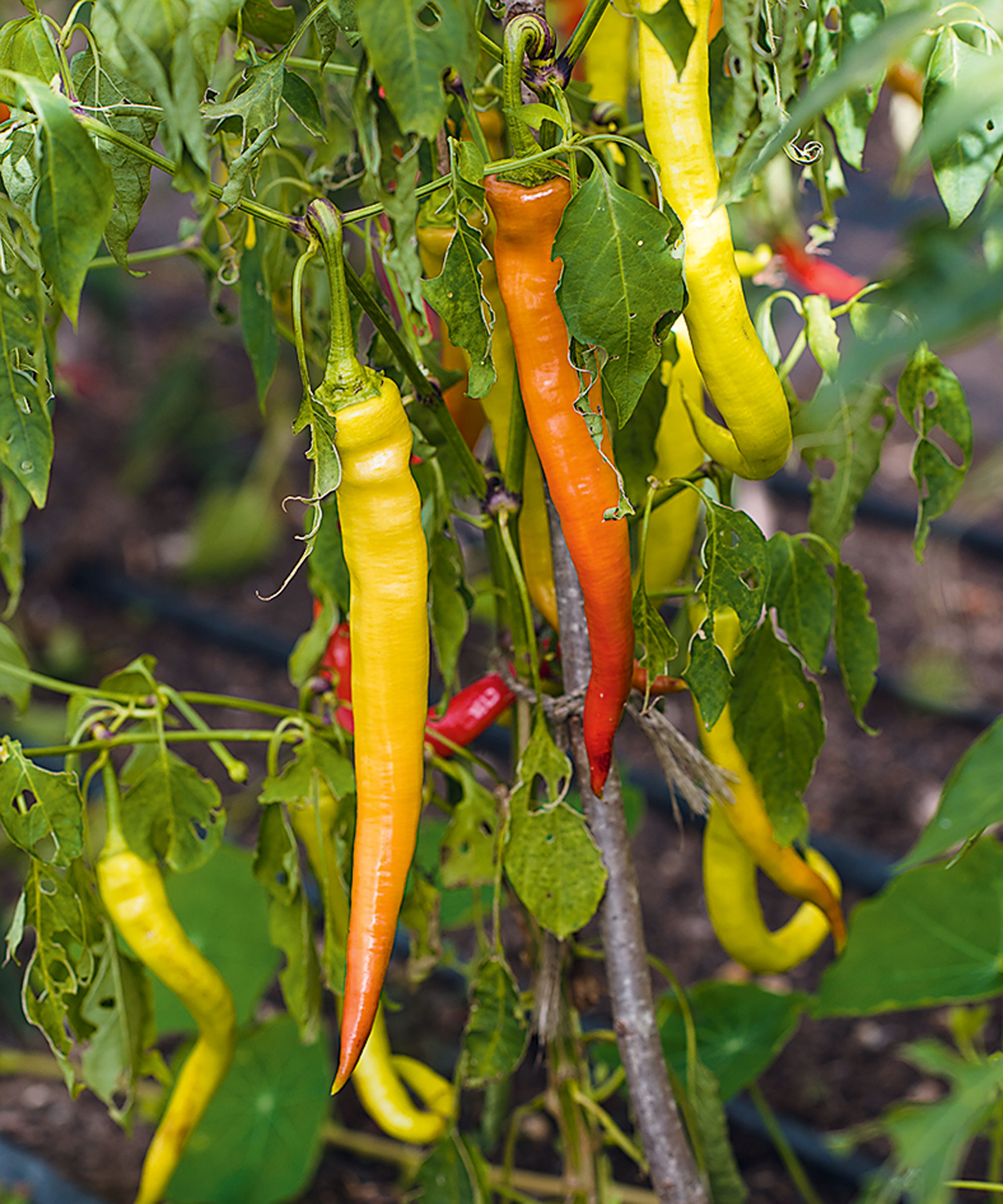
The key to a thriving small vegetable garden is cultivating limited quantities of various plants that provide significant benefits.
Choose simple harvest crops such as cut-and-come-again salad greens, chili plants, fresh herbs, leafy vegetables, and exceptionally sweet peas straight from the pod.
“Throughout the years, some plants and types have become leading choices in terms of time versus reward,” says Sarah Raven.
They are the ones that grow quickly and are simple to cultivate, making them ideal even if you have limited gardening experience. Whenever I’m asked by new plant owners which plants to choose, I always recommend cut-and-come-again leaves.
12. Cultivate vegetables on a pergola

Vertical garden ideasare an excellent choice when planning a small vegetable garden. Traditionally, sprawling roses orthe best flowering climbersthey are the ideal options for growing along a pergola; however, they can also be used to provide support for vegetable vines.
The top vegetables to combine with yourpergola ideasare cucumbers, squash, pumpkins, and beans, as these need a structure to grow properly.
Cultivating your plants in a vertical manner will not only maximize the use of available space but also provide protection against slugs and other pests – plus, they are simpler to maintain.
“When cultivating vegetables on a pergola, it’s simpler to access the produce as it matures,” explains Lindsey Hyland, founder ofUrban Organic YieldYou will also reduce the water usage for your garden because the plant’s roots are limited to a much smaller area.
If you’re curious about starting to cultivate vegetables on a pergola, then discoveringhow to cultivate cucumbers in an upward directionis an excellent starting point.
13. Cultivate vegetables on a trellis in limited areas

A highly intelligent compact vegetable garden concept is to attemptvegetable garden trellis ideas, to maximize the available space by utilizing vertical surfaces for crop growth upwards – this is especially beneficial if you are seeking methods to integrate vegetable plants intocourtyard garden ideas.
Include some herbs, which make great potted plants and can also be helpful forcompanion planting, and you could have everything necessary to prepare a tasty homemade meal with ease.
You can find a planter box that includes a trellis, which is ideal for growing vegetables in an upward direction, like this onegarden plot with container at Walmart that is also self-watering.
14. Extend upwards along walls or fences

Try different climbing plants to maximize your space when youplan a small garden:
- Cover fences or wallswith wire, string, or a grid for beans, peas, or trained fruit; guide the vines up trellises, and form living screens or low borders.
- Outdoor plant stands tiered, utilizing old ladders, piled containers, pallets or metal platforms, also provide the chance for a vertical vegetable garden and numerous various options for small vegetable garden concepts, even in asmall garden with decking.
Conduct some research on a system that is appropriate for your area, and test which crops perform best.
Generally, opt for dependable options, like clumping plants and hard-pruned herbs that regrow after being cut back, red perilla, salad greens, sugar snap peas, edible flowers, and strawberries.
TOP TIP:If a wall is located in a shaded area, it can also be painted white to bounce light back towards a climber, which will alsomake a small garden appear larger.
15. Design an efficient vertical garden
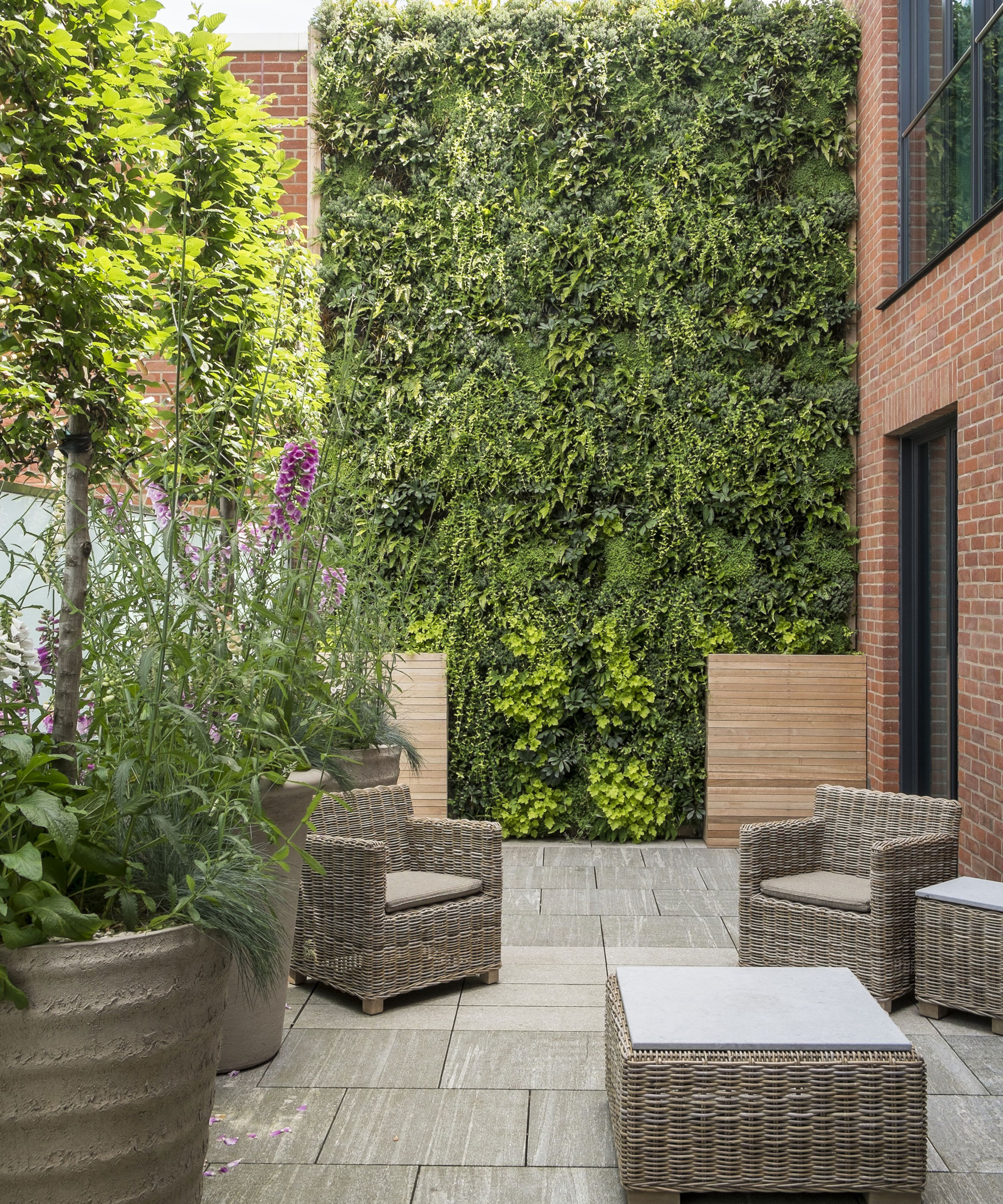
Cultivating plants in an upward direction is an excellent method to boost the efficiency of your garden space. Nevertheless, you are not restricted togrowing cucumbers or growing runner beanson lattices – though there are manytrellis ideas to help inspire you.
Living wall ideasoffer an excellent chance to maximize every bit of your available area.
They also provide an excellent method to incorporate vegetables into your balcony orsmall garden ideas. These living planters are suspended against a wall or fence and include separate compartments where you can grow your plants.
Clearly, this approach would not be effective for all types of vegetables – particularly root vegetables or those with extended roots.
Nevertheless, leafy greens like arugula, cut-and-come-again lettuce, spinach, or even tiny cherry tomatoes make excellent options for your garden plans.
16. Mix vegetables with flowers
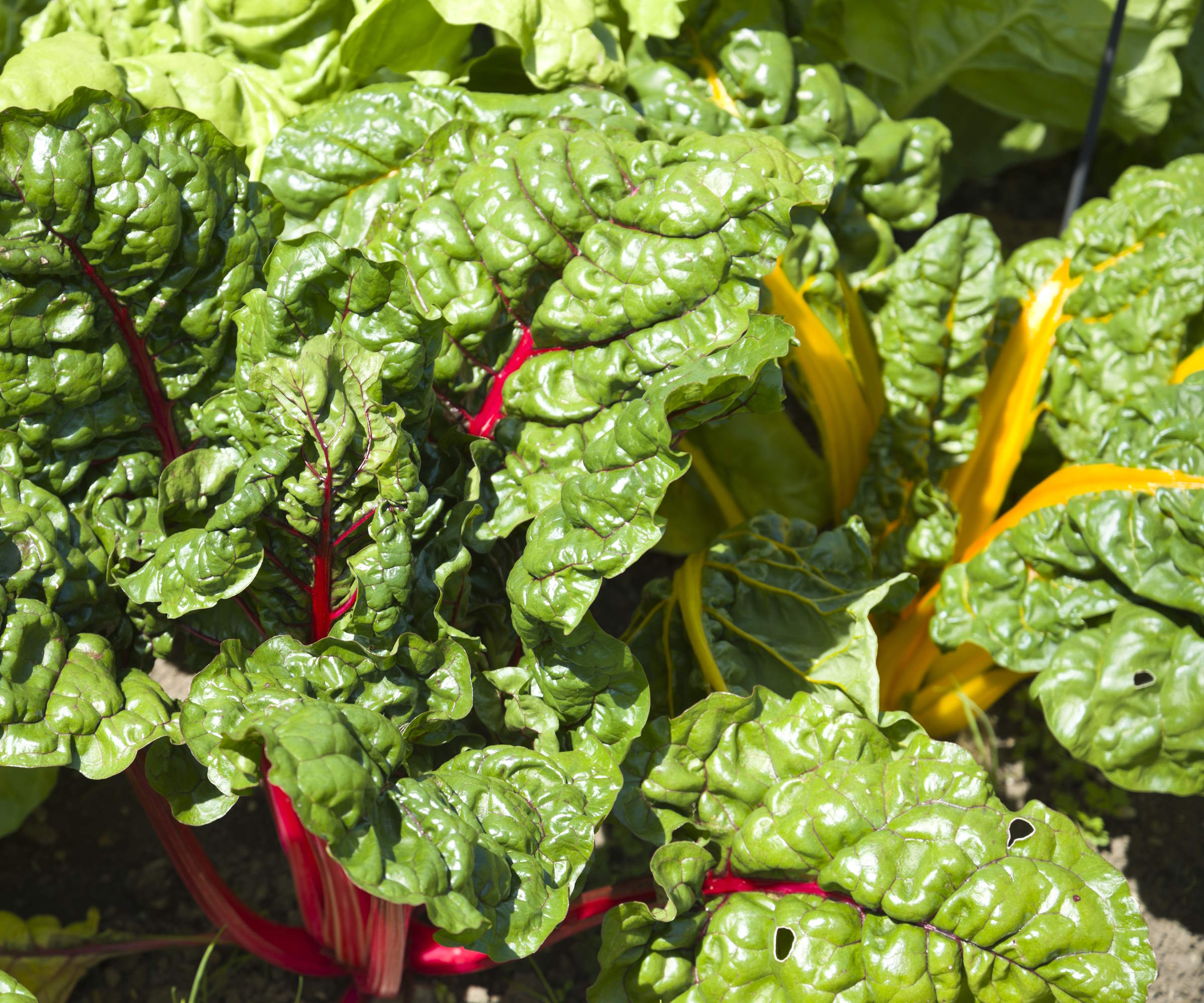
If your garden is small, you’ll want to design it to offer the best of both worlds, blending small vegetable garden ideas withflower bed ideas. If that’s true, handle your vegetables the same way you would other plants, cultivating three of the same vegetable together with repeated flower planting to achieve a striking, unified appearance.
17. Incorporate vegetables into garden beds
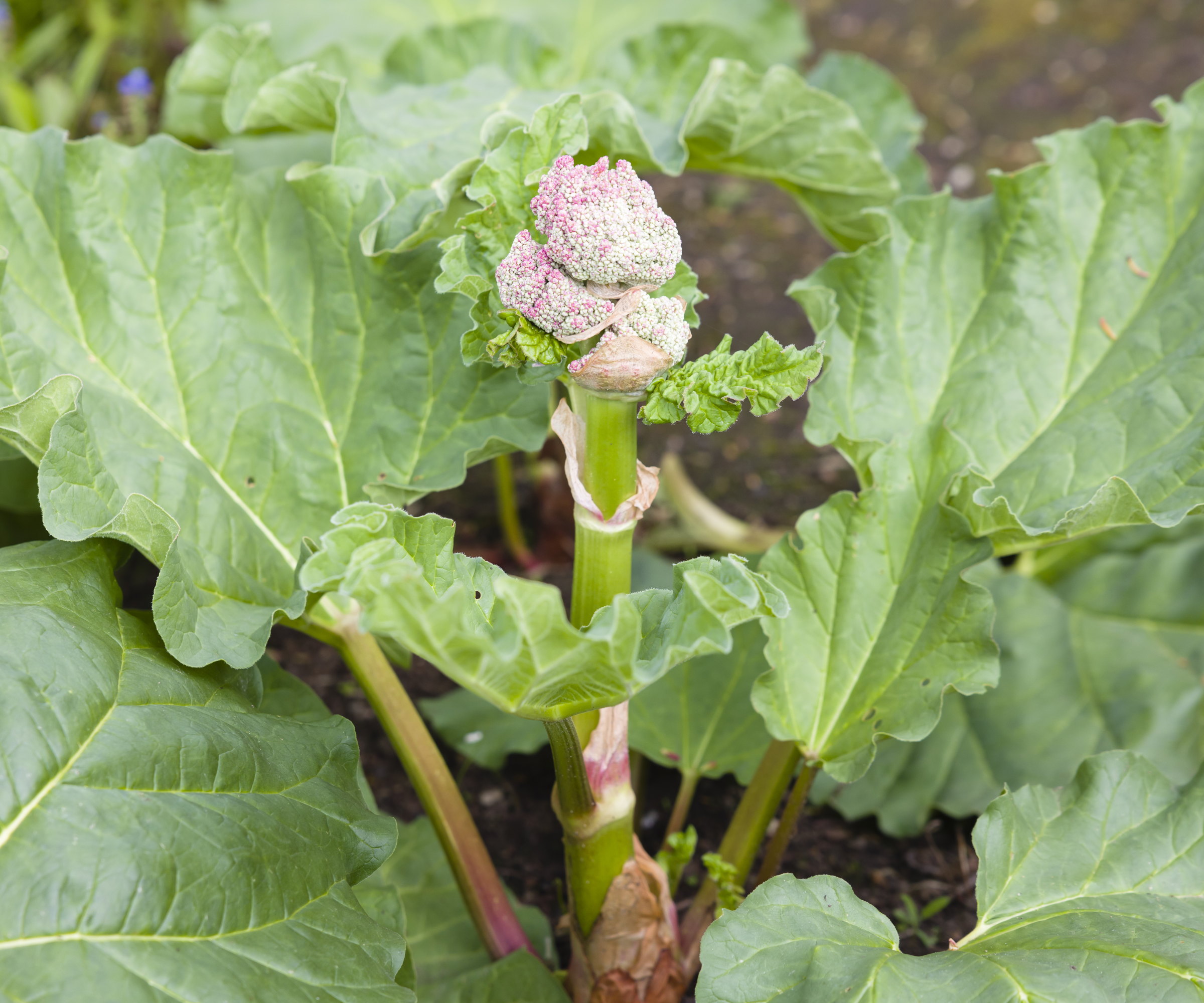
Tips for a small vegetable garden involve some imaginative planning. Combine edible plants with your flower beds to create a classic potager style.cottage garden ideasfrom earlier times, when flowers, vegetables, herbs, and fruits were planted in any available space.
Vegetable or fruit plants can look beautifully integrated with other plants. Stylish options for small vegetable garden ideas include ruffled lettuces and cabbages, tall cardoons, climbing runner beans and peas that climb poles, colorful chard, and delicate asparagus and fennel.
A casual approach, featuring a variety of food sources, enables staggered harvesting and prevents the problem of having too much or too little food, as well as areas of bare ground.
Miniature edible plants, like chives, parsley, and carrots with feathery tops, add a nice touch as borders for garden beds. Hardy herbs provide visual appeal throughout the year, including sage and thyme that spreads along the ground and features lovely blossoms.
Incorporating vegetables and fruits within your flower beds offers an additional practical benefit by forming a colorful and fragrant patchwork that disorients insect pests, hindering their ability to locate the vegetables or fruits they wish to consume. Additionally, flowering herbs can draw in helpful insects.
18. Grow for color
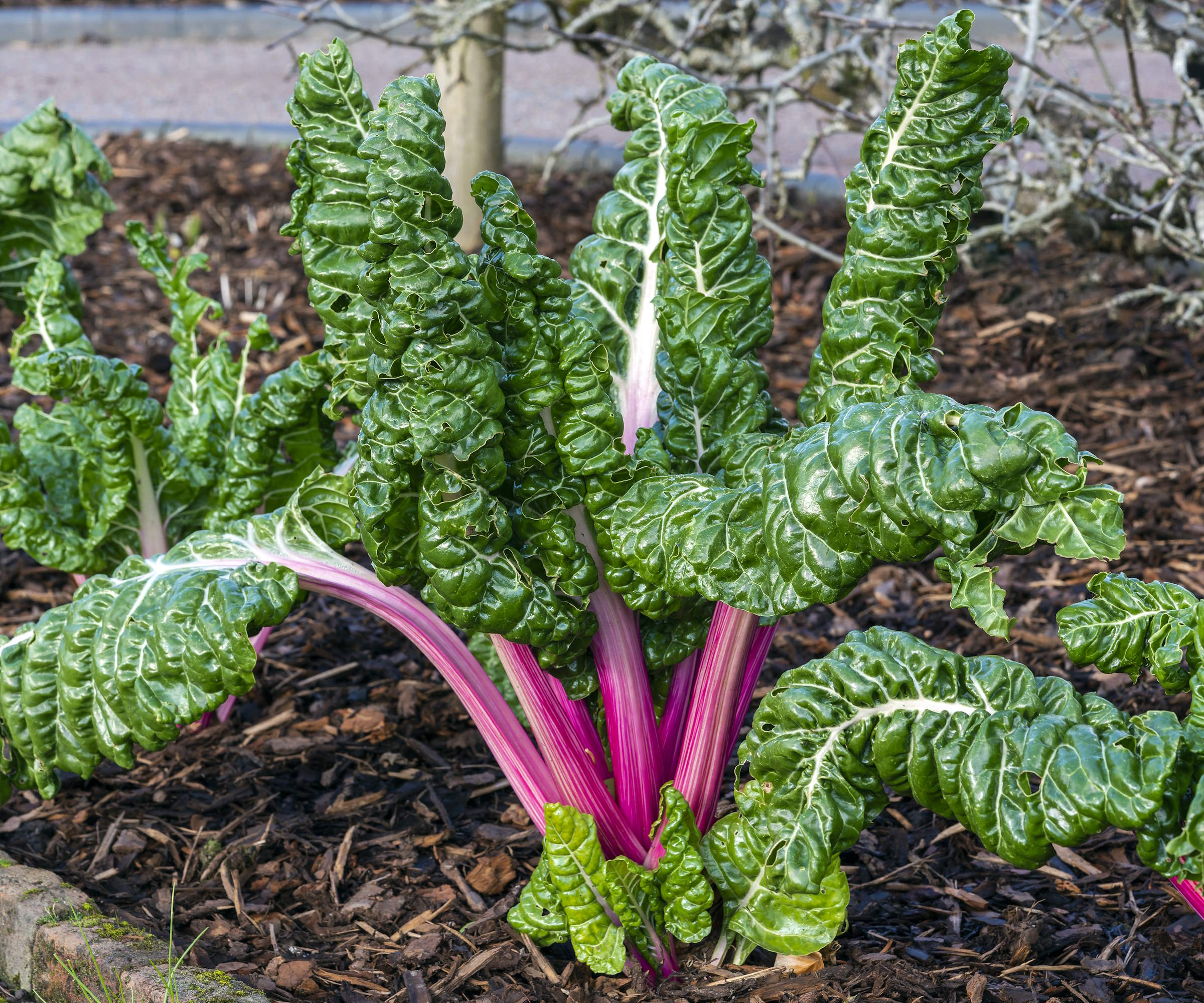
Certainly, you’ll want to cultivate what you enjoy eating, what fits your space, its location, and soil type, but if you decide to grow plants for their visual appeal in small vegetable garden ideas, you’ll benefit twice—enjoying a delicious harvest that also looks attractive as it grows. This Swiss chard is a perfect example.
19. Establish a vegetable garden in a window box

Window and planter box ideasare most appropriate for short plantskitchen gardenedibles, like herbs and salad greens, and should be suitable for the conditions at your window.
Incorporate planting “recipes” to experiment with a combination of various mints, strawberries mixed with parsley, or create a comprehensive salad garden featuring microgreens, salad greens, chives, basil, and edible flowers.
20. Cultivate fruit-bearing trees in pots
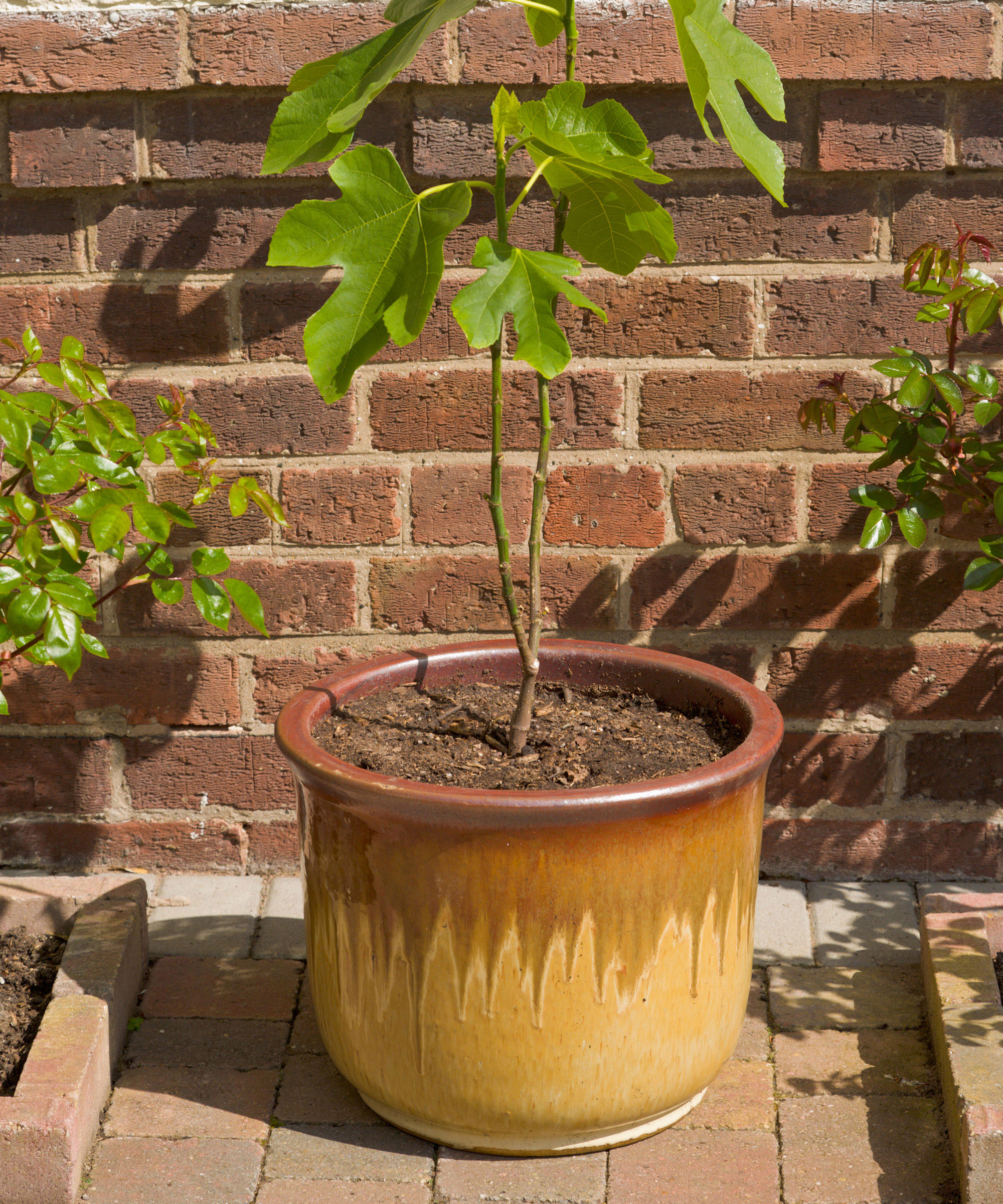
It’s feasible to incorporate numerous fruits, even in compact vegetable garden concepts. Most fruits thrive in sunny areas, making them suitable for planning.roof garden ideasbut if your garden is in partial shade, many of the options listed below will still thrive.
These can also be beautiful when cultivated in containers across variouspatio ideas, so they are easily accessible when you feel the urge to pick a juicy fruit from the bush while sitting outside savoring your garden.
Gooseberry bushesCan be trained against a wall and thrive in a large pot or container with consistent watering and fertilizing. They prefer a sunny location but can still produce fruit in shaded areas, requiring well-draining, moist soil. Prune once a year during late autumn or winter.
Strawberriesare simple to cultivate in containers, along the edges, or in hanging baskets. They require nutrient-rich soil and a sunny location. Plant bare-root runners during late spring to early summer. Maintain the potting mix damp and provide nutrients when the flowers begin to bloom.
Blueberriesrequire acidic soil to thrive, so opt for well-draining ericaceous soil when planting in pots. Avoid allowing it to become too large for its current space, and transplant into a marginally bigger container. Apply a rhododendron-specific fertilizer and ensure thorough watering. These plants are self-pollinating, so having a few in containers can result in fruiting at various times.
ApplesCan be grown in containers. Choose varieties that have been grafted onto a rootstock suitable for pot cultivation. M27 is the smallest dwarf type, while M9 is also dwarf but more vigorous. You can also train them as step-overs or against a fence, or plant them in a flowerbed. Varieties available include Fiesta, Discovery, Sunset, and Falstaff.
Citrus treesFor example, lemons and kumquats can be cultivated in pots outside during the summer and brought indoors for the winter. Combine one part sand or gravel with four parts potting soil. Utilize rainwater for watering – perfect forsustainable small garden ideas.
21. Adopt cultivated fruit trees to make the most of your available area
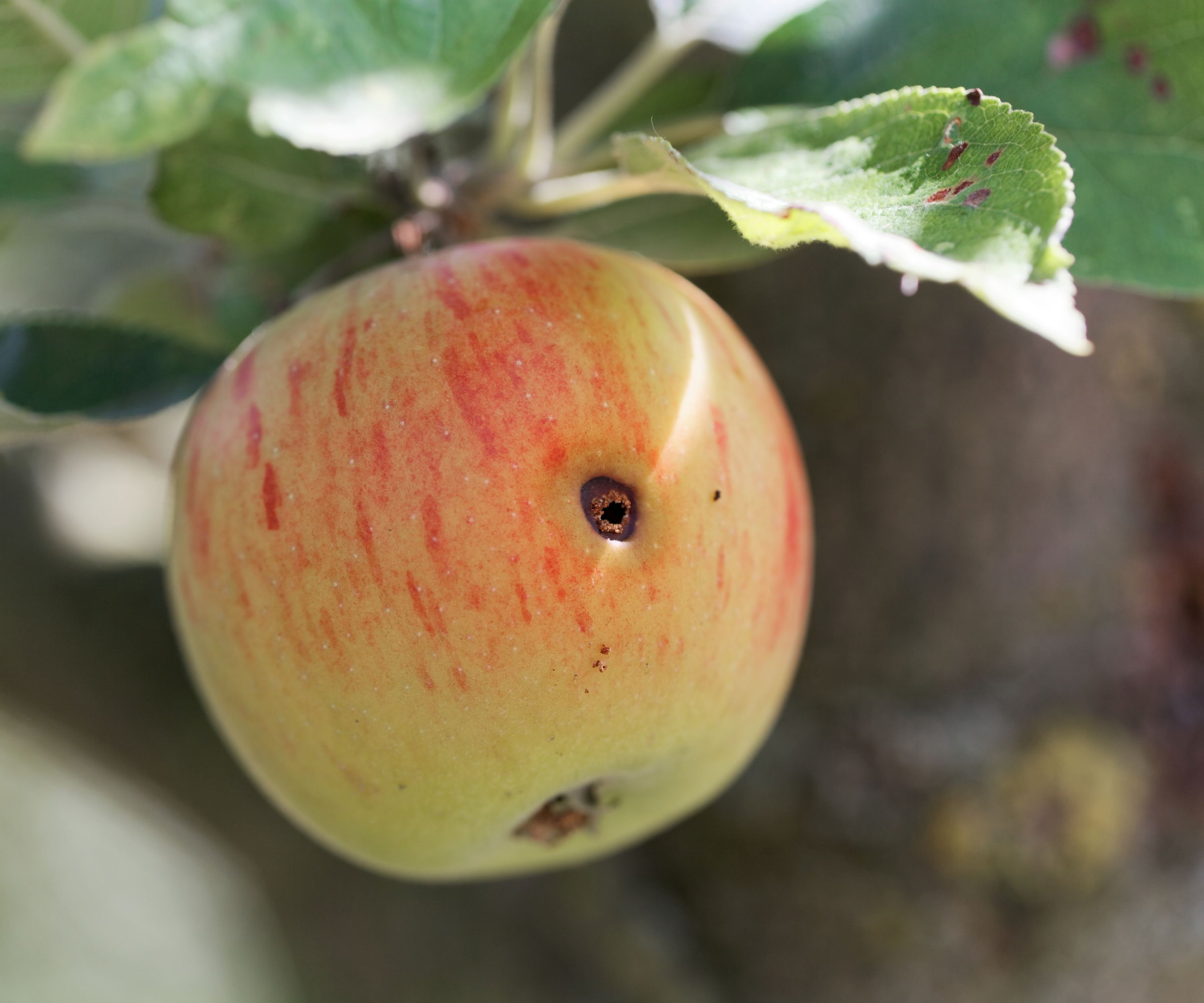
You don’t need a large orchard to grow your own fruit. Dwarf fruit trees are some of thebest trees suitable for small gardensand can be planted directly into an ornamental bed, appreciated for their attractive flowers as well as their fruit, and mixed with roses as perfect partners.
Numerous compact options are available that can flourish within your small vegetable garden concepts or as part of your container gardening setup.
From apples and pears to cherries and apricots, there are compact types available for most of thebest fruit trees,which means you don’t need to miss anything even with your limited space.
If you’re truly limited on space, think about grafted fruit trees. In dual fruit trees, two distinct trees are joined to a single rootstock. This allows you to grow several types of fruit from one tree.
One instance of a multi-grafted fruit tree is this small-sizedFruit Cocktail Tree from Fast Growing Treesthat yields peaches, plums, nectarines, and apricots all on a single tree.
22. Install a water collection barrel
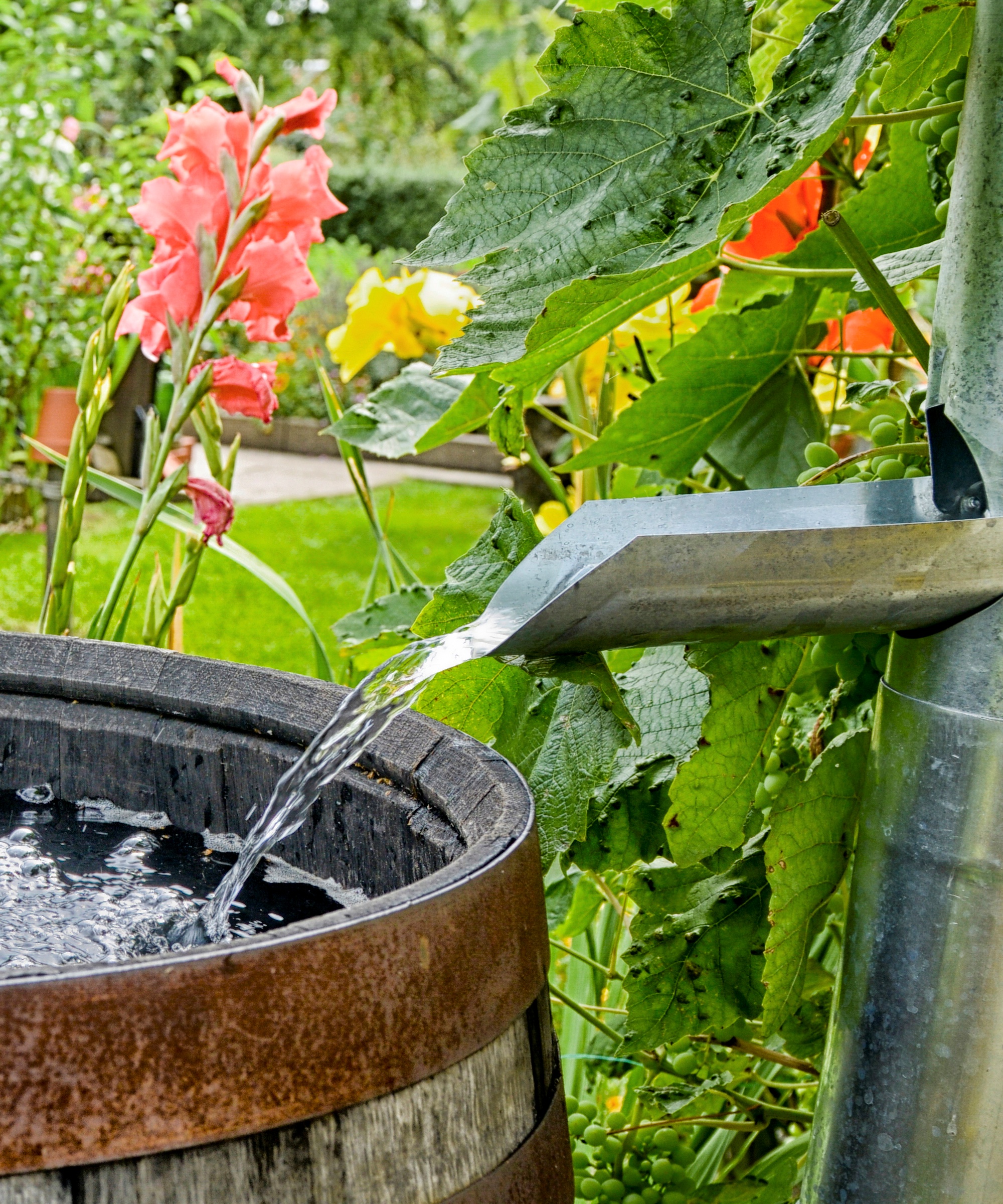
Sustainability plays a vital role in all aspects of our lives, and the garden is no exception. Adding vegetable garden concepts to your backyard is an excellent method to lower your environmental impact.
In addition, there are furthersustainable garden ideasto assist in making your vegetable garden more eco-friendly – one of the simplest methods is to install a rain barrel.
Adding a rainwater collection barrelRainwater collection tanks can be found on Amazon) is an excellent method toharvest rainwater,which you can subsequently use to irrigate your plants.
“Utilizing rainwater for plants reduces the need for tap water, is naturally available, and has no environmental impact in terms of treatment and delivery,” says Dr. Mark Gush, Head of Environmental Horticulture at theRHS.
Additionally, rainwater has a slight acidity, which reduces the pH when it is added to soil, helping to release nutrients from the soil and make them available for plant absorption. It also helps to balance the gradual rise in pH that can occur from using treated tap water over time.
23. Make sure to consider the routes as well
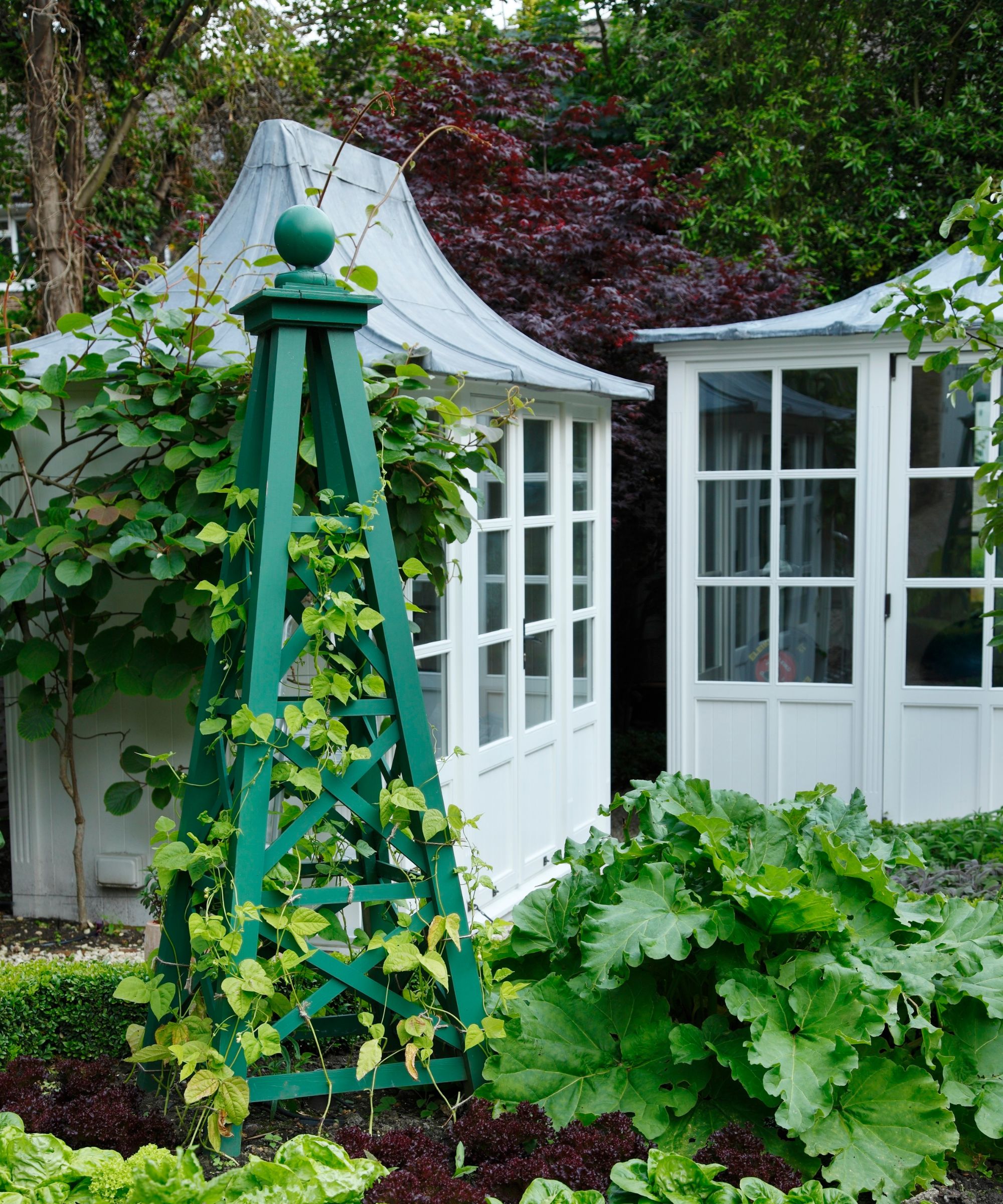
Accessibility is a key element in vegetable garden designs, since, unlike a flower bed, you must be able to reach every plant for maintenance and picking. In addition to improving access,garden path ideasalso assist in establishing a well-structured vegetable garden.
If you’re asking, “What can I do to make my vegetable garden more appealing?” then incorporating borders and a pathway will immediately enhance the area, providing it with a sense of organization and design.
The selection of materials for your path can produce various impacts in your vegetable garden.
Pebbles make an excellent option for a relaxed vibecottage garden ideas– combine with arches adorned with flowering plants and big terracotta planters to achieve the romantic potager style.
24. Invite animals to your vegetable garden

‘Excessively clean plots without any flowers offer minimal support for fruit growth or certain vegetables, particularly zucchini and marrow. Monoculture should be avoided in all garden areas,’ says Rosy Hardy, owner of a plantsman’s nursery.Hardy’s Plants.
25. Incorporate a sitting space into your vegetable garden
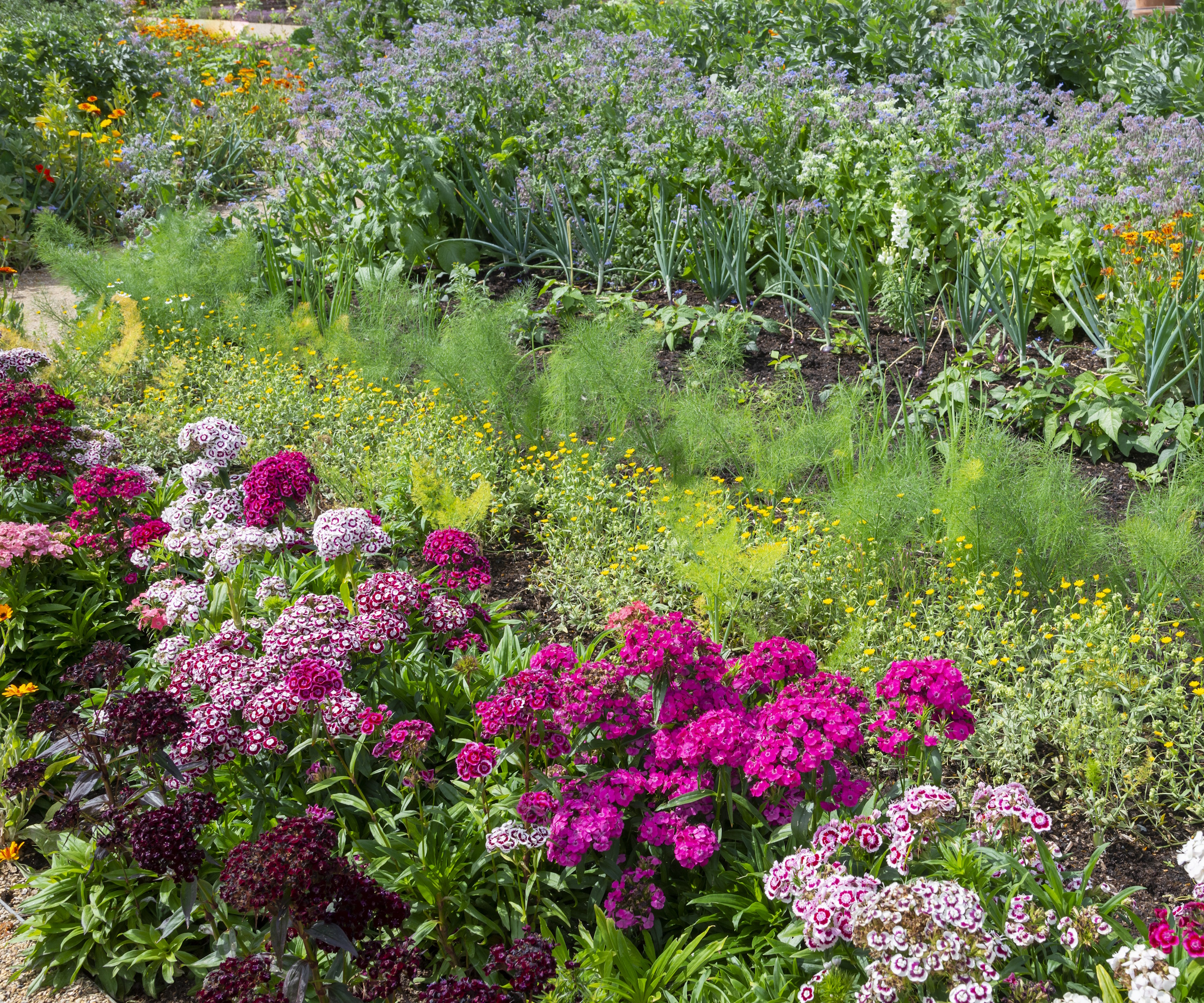
Moving from exploring ideas for a vegetable garden to establishing one that is full of crops and personality is certainly a lot of effort.
Therefore, it’s essential to make time to appreciate your area. Adding a specific seating area, such as a bench or arbor, to your vegetable garden plans creates a place to unwind, allowing you to take a moment and savor the beauty and yield of your garden. It also offers a convenient location for that essential coffee break.
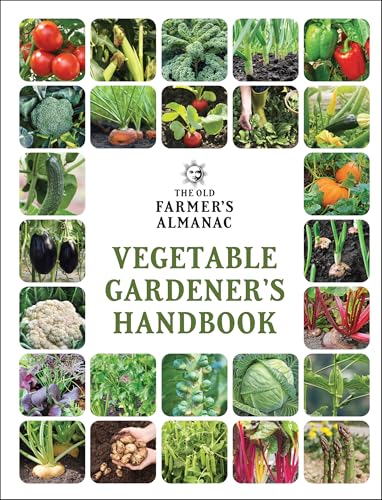
This guide for those cultivating a vegetable garden offers numerous effective tips and methods, along with detailed instructions for successfully growing 32 different vegetables.
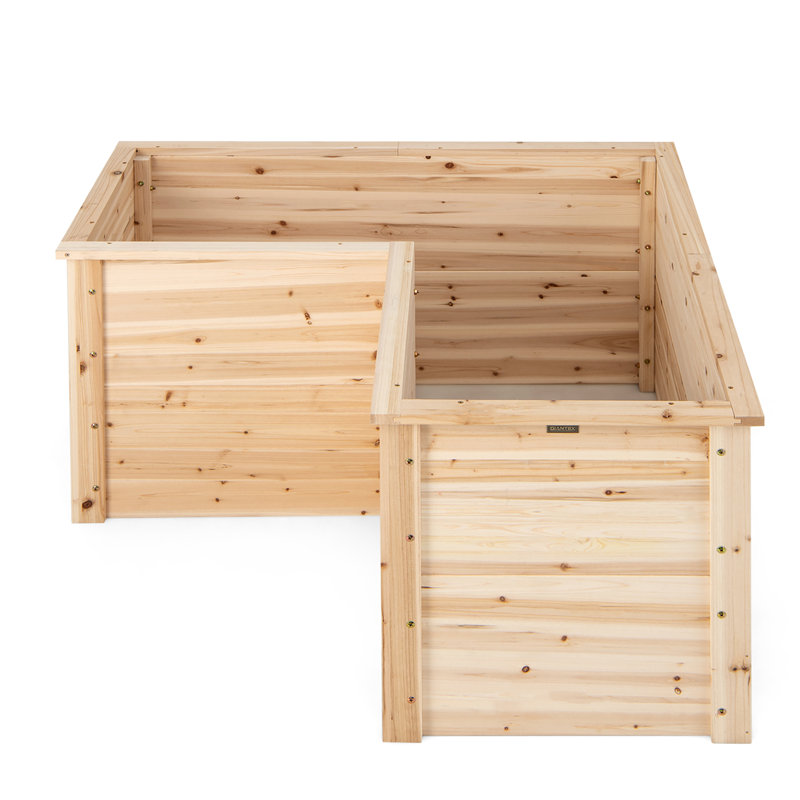
This distinctive L-shaped elevated garden bed has dimensions of 47.5 inches by 47.5 inches by 24.5 inches and is constructed entirely from solid fir wood. It is well-suited for growing various types of flowers, herbs, vegetables, and fruits.
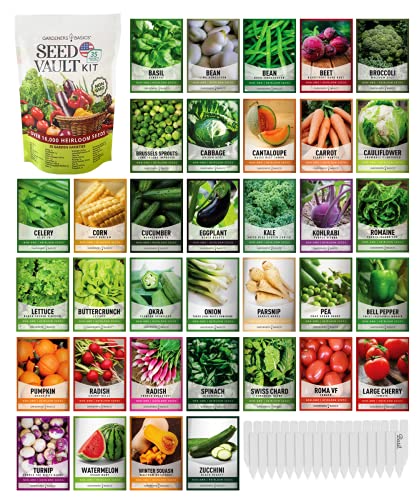
This package includes 35 simple-to-cultivate vegetable types and more than 16,000 seeds. It contains everything necessary to begin a very productive vegetable garden.
FAQs
How can I arrange my vegetable garden?
Arrange your vegetable garden by making a set of edges—such as elevated beds, in-ground plots, or containers—divided by walkways to achieve a classic vegetable garden layout.
Take inspiration from how to organize a gardento give structure to your storyline and design the layout according to the vegetables you wish to cultivate.
“Unless crops require specific protection, combining them can be beneficial, as a vast area of one type of crop tends to draw pests, while a mix of various edibles and ornamental plants confuses them. It’s useful to sketch the layout on paper first before marking or planting,” says Leigh Clapp.
How can you arrange a compact vegetable garden?
Space out the planting for small vegetable garden ideas to ensure there is always something ready to pick.
Longer-term crops, such as cabbages and broccoli, can be planted together withfaster-growing options, including pre-mixed salads, pea sprouts, mizuna, rocket, and radishes, which can be harvested for consumption approximately six weeks after planting.
Many crops can be continually picked, including cherry tomatoes, peppers, Swiss chard, beans, and snap peas.
For areas that face north or receive limited sunlight, such as narrow spaces,long gardens, try shade-tolerant ediblesfor example, spinach, Swiss chard, kale, arugula, sorrel, Asian greens, and salad greens, Alpine strawberries, rhubarb, blackcurrants, mint, bay leaf, coriander, chives, parsley, chamomile, and tarragon.
Also, take into account when to plant vegetablesalso knowing where to position them. This will assist you in planning your small vegetable garden.
When is the appropriate time to begin planting my vegetable garden?
You can begin planting your vegetable garden in early winter and continue through spring, but you can cultivate vegetables all year long—provided you choose the appropriate types.
“Cool-season vegetables, such as cabbage, kale, broccoli, cauliflower, and Swiss chard, can be sown four weeks or earlier than the final spring frost, based on the specific plant,” says Amy Enfield, a Horticulturist withBonnie Plants.
For staple garden plants such as tomatoes, peppers, cucumbers, and melons, planting begins after the risk of frost has disappeared. Nighttime temperatures need to remain consistently above 50 degrees before warm-season crops are placed outdoors. In southern regions, warm-season planting typically starts in late March to early April, whereas in the northern areas, mid-May to early June is generally the ideal period to begin planting.
“You can always consult your state’s cooperative extension service for guidance on when to begin planting vegetable seeds and which types of vegetables thrive best in your region,” suggests Idelle Fisher fromSandia Seeds.
To assist in maintaining a cost-effective and self-reliant budget, this guide to some of the bestvegetable garden hackscan motivate you to collect seeds, safeguard your crops, water plants more effectively, and increase recycling within the vegetable garden.
Liked this article? To discover more stories like this, follow us on MSN by clicking the +Follow button located at the top of this page.

